Abstract
Two studies examined the effects of a reductive treatment versus instruction-based treatments on the generalized reduction of problem behaviors. Each study involved a detailed analysis of multiple problem behaviors performed by school-aged youth with severe intellectual disabilities. The analysis examined the contrasting effects of one of two different positive intervention procedures (teaching a positive alternative behavior or providing additional teacher assistance during instruction) versus blocking and/or verbally reprimanding a problem behavior. The focus of each analysis was on the covariation of multiple problem behaviors within functional response classes. Results of the investigation indicated that when only one member of the response class was blocked, a collateral increase was observed in one or more different problem behaviors from the same response class. Alternatively, when 1 participant was taught a functionally equivalent mand response, all problem behaviors in the response class were reduced. Problem behaviors also were reduced for the remaining participant by presenting antecedent teacher assistance. Implications of the research extend to analysis of covariation within response classes and to procedures that result in generalized reduction of problem behaviors within a response class.
Full text
PDF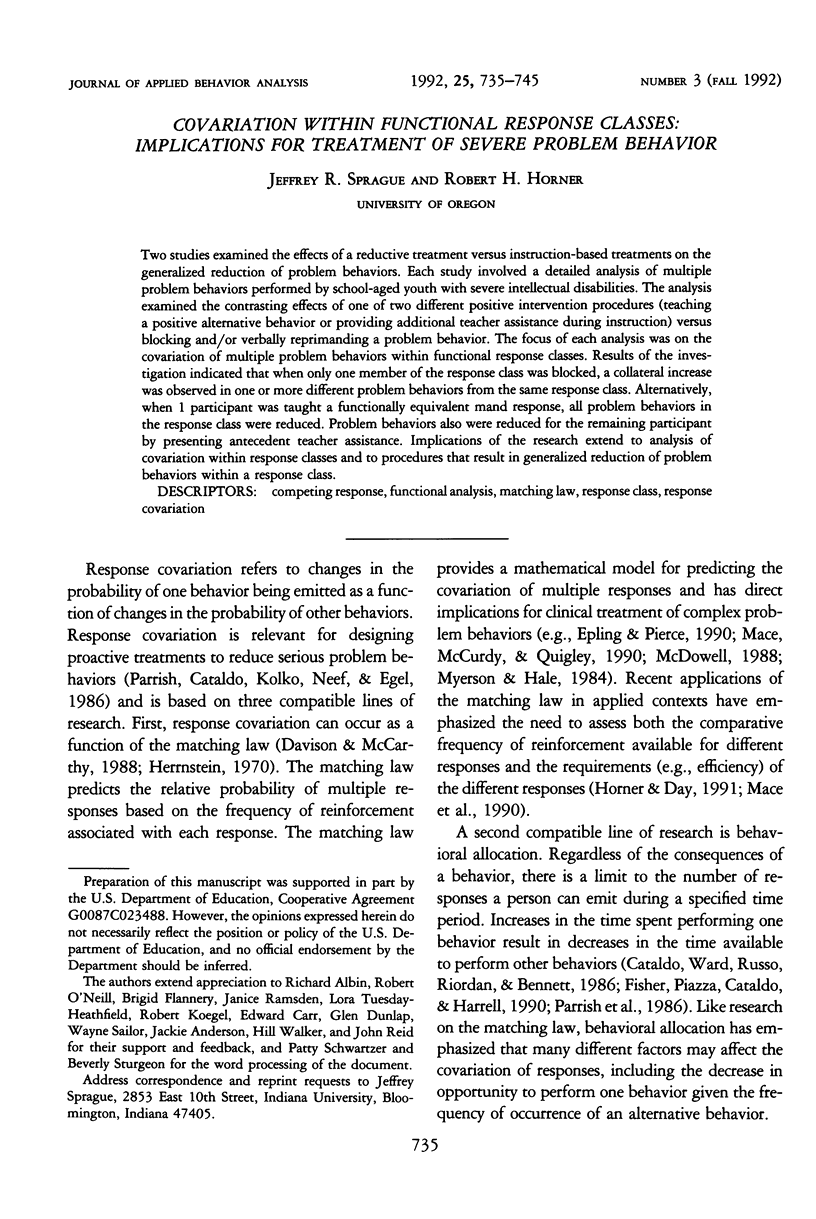
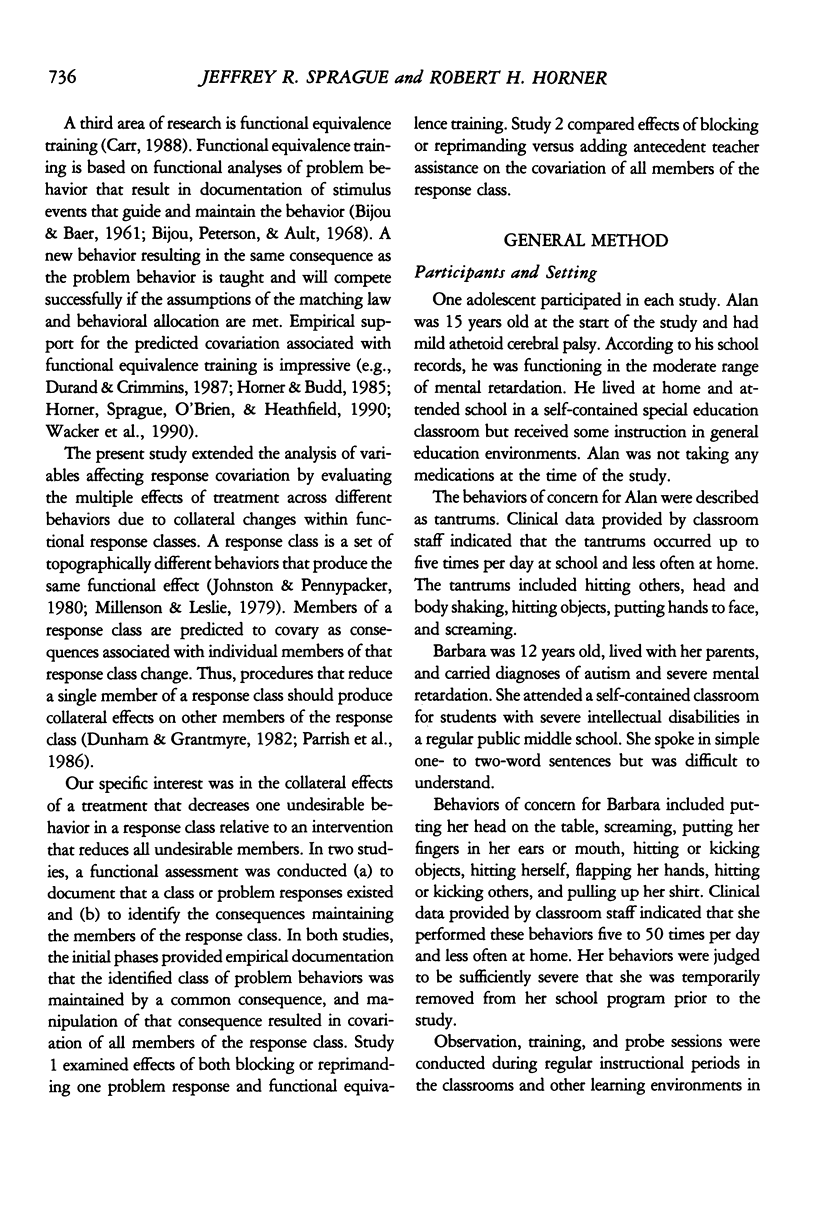

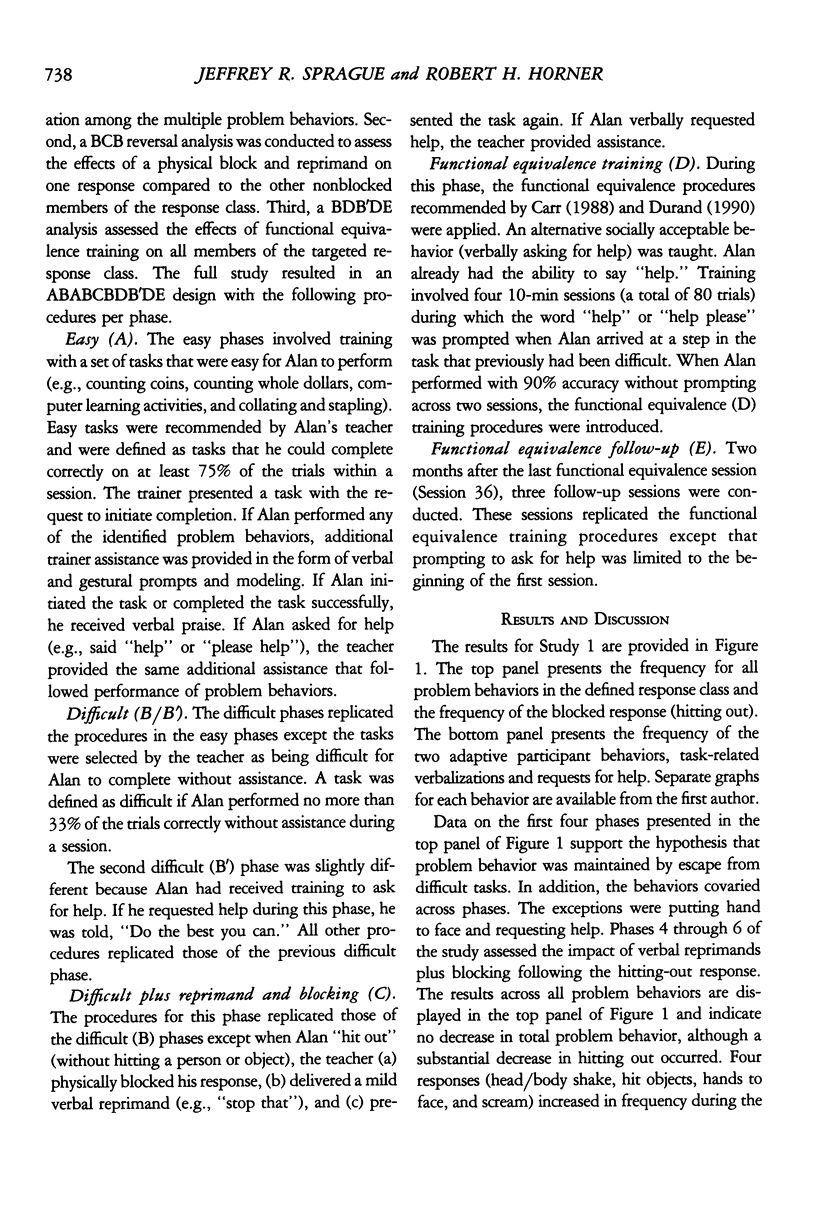
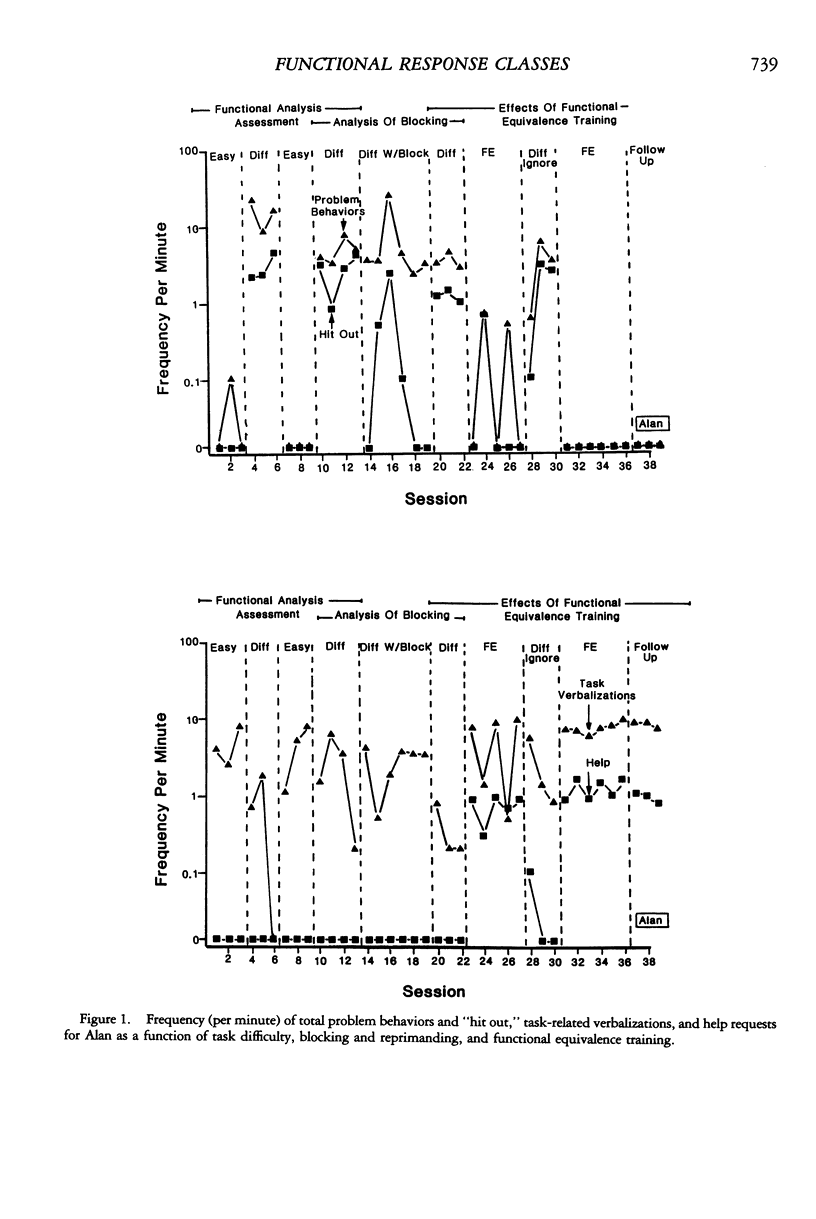
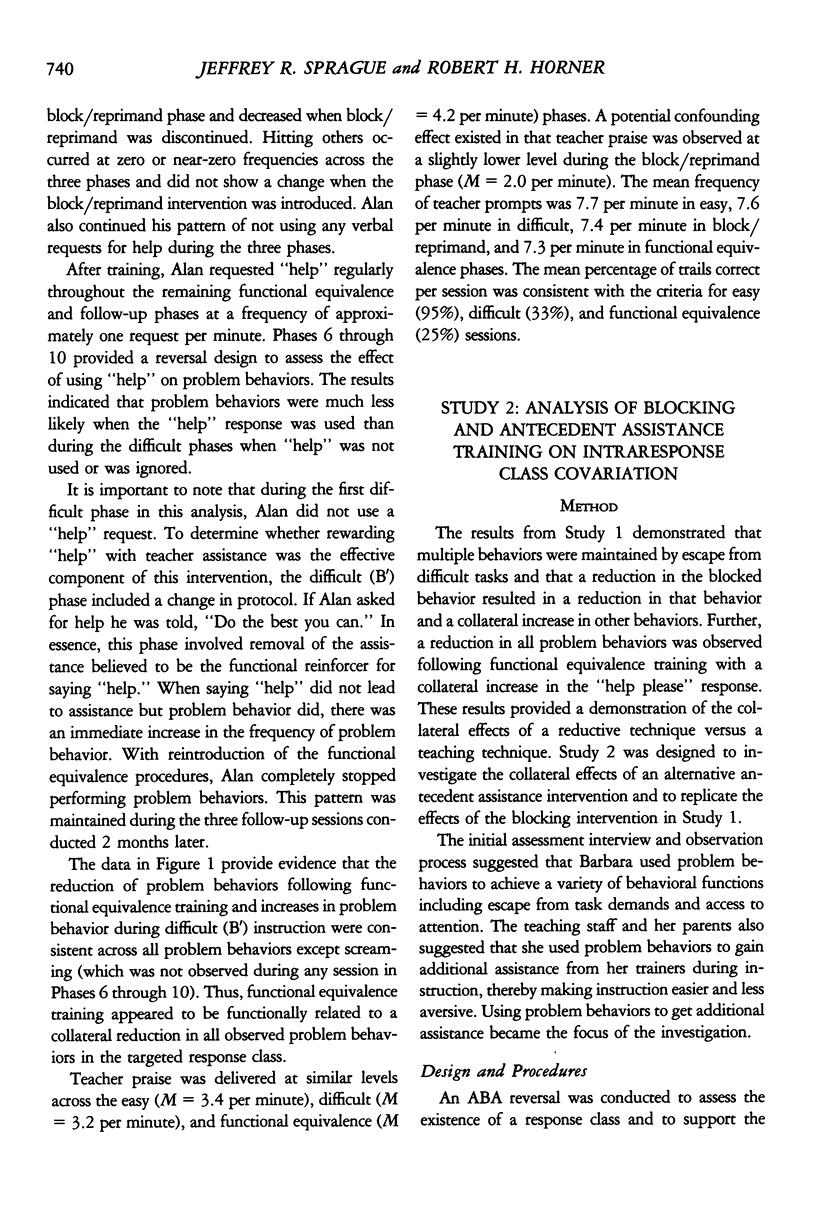
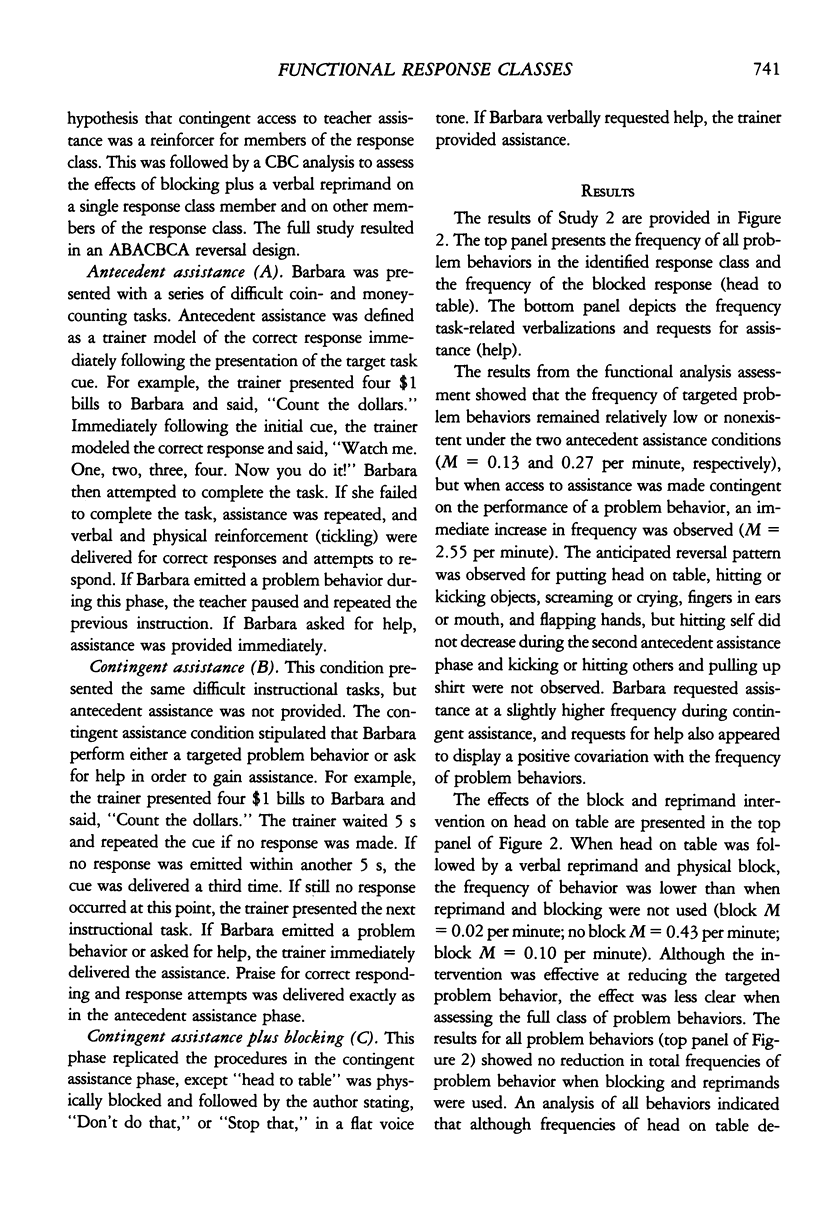
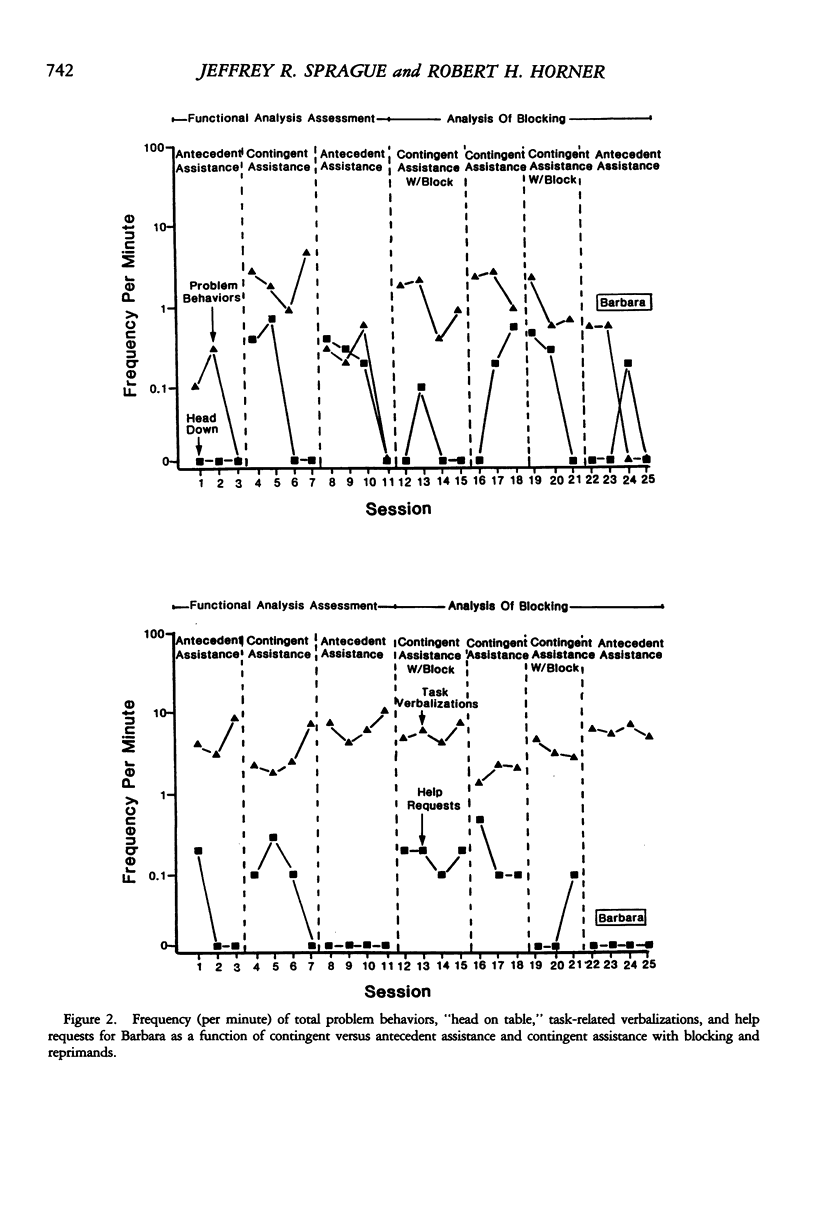
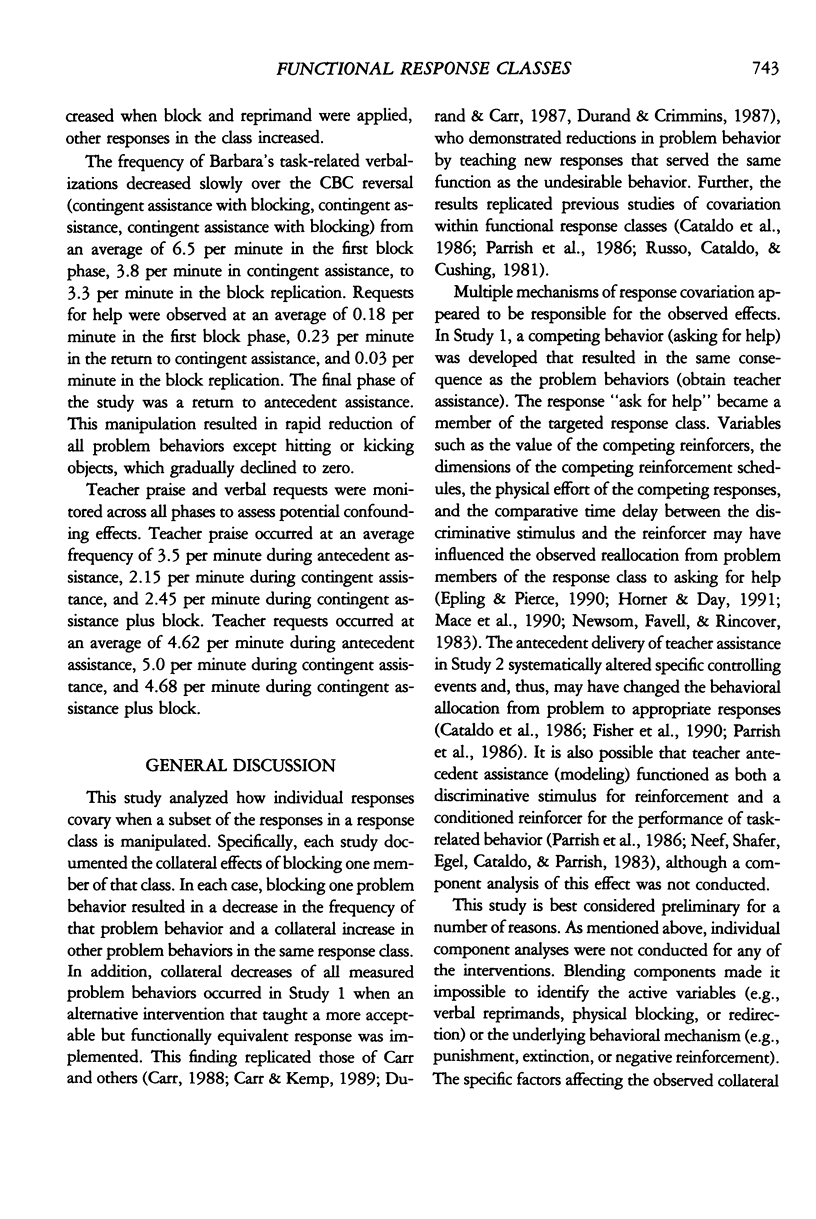
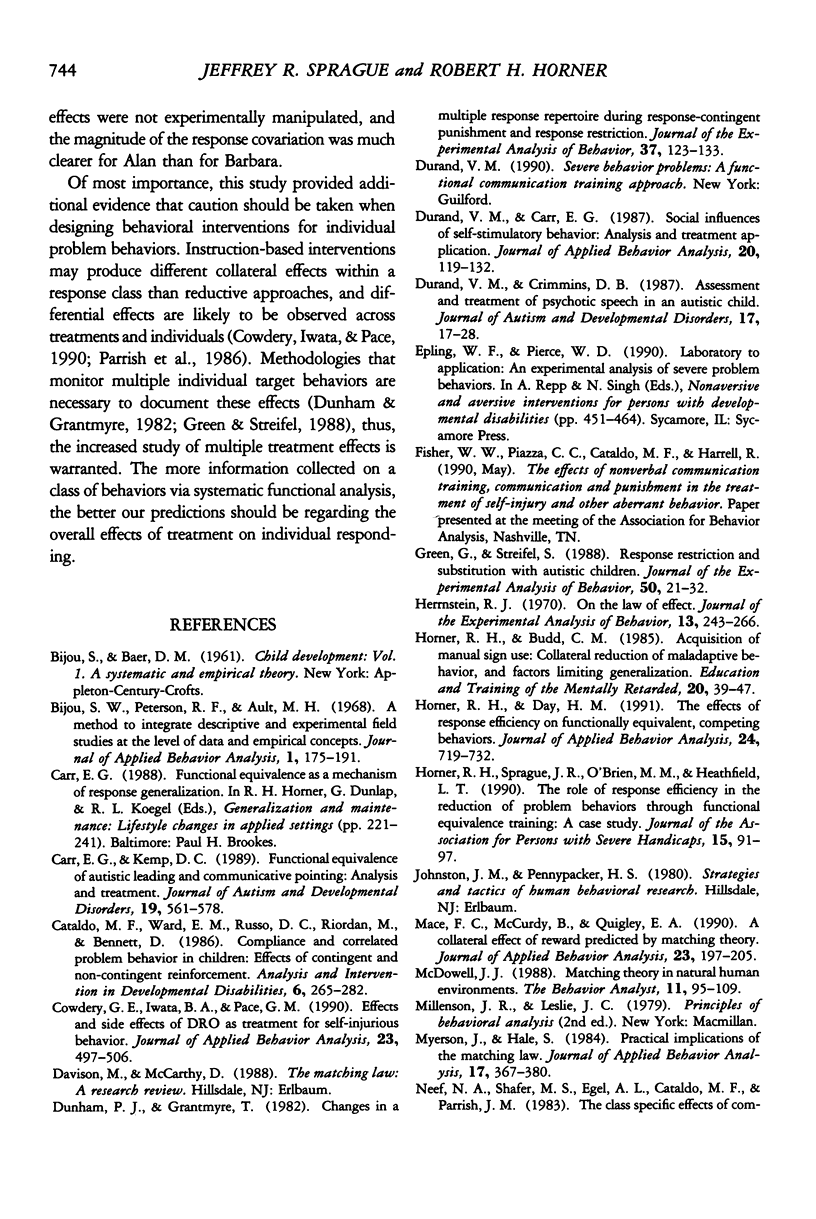
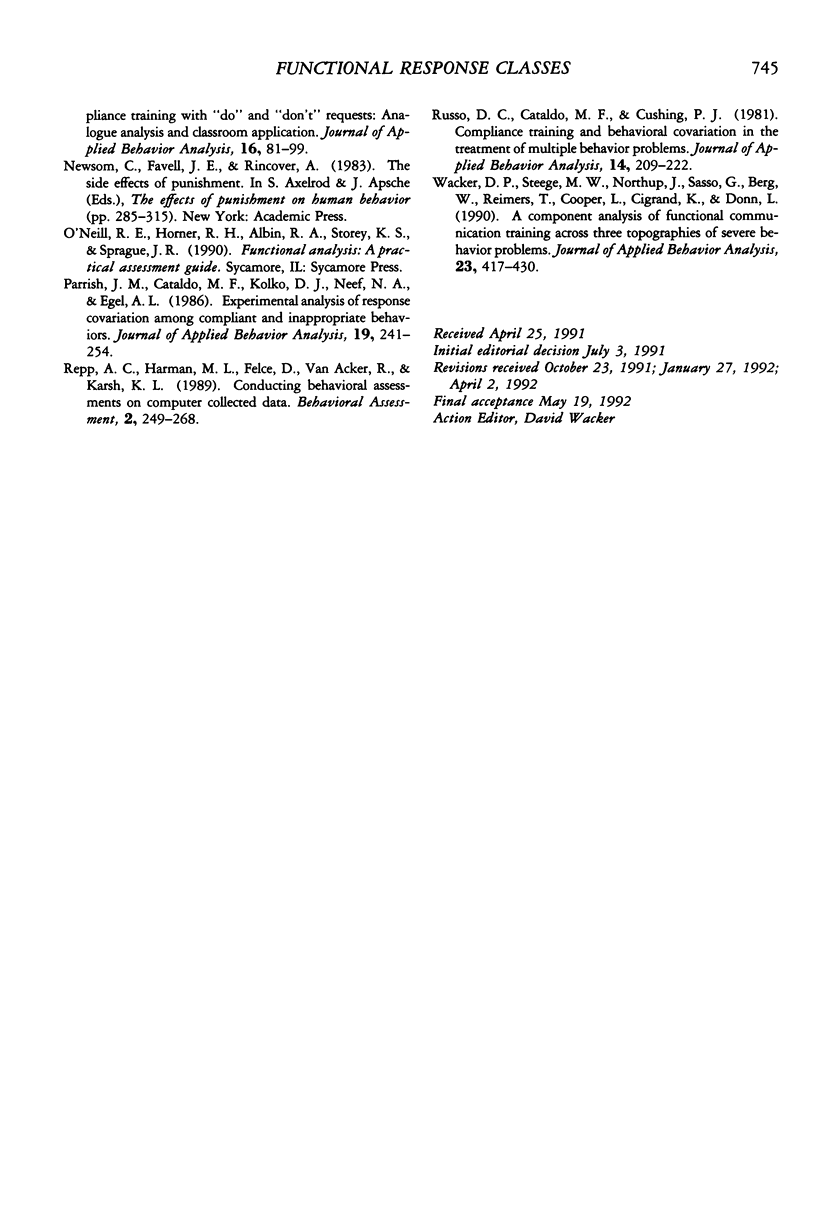
Selected References
These references are in PubMed. This may not be the complete list of references from this article.
- Bijou S. W., Peterson R. F., Ault M. H. A method to integrate descriptive and experimental field studies at the level of data and empirical concepts. J Appl Behav Anal. 1968 Summer;1(2):175–191. doi: 10.1901/jaba.1968.1-175. [DOI] [PMC free article] [PubMed] [Google Scholar]
- Carr E. G., Kemp D. C. Functional equivalence of autistic leading and communicative pointing: analysis and treatment. J Autism Dev Disord. 1989 Dec;19(4):561–578. doi: 10.1007/BF02212858. [DOI] [PubMed] [Google Scholar]
- Cowdery G. E., Iwata B. A., Pace G. M. Effects and side effects of DRO as treatment for self-injurious behavior. J Appl Behav Anal. 1990 Winter;23(4):497–506. doi: 10.1901/jaba.1990.23-497. [DOI] [PMC free article] [PubMed] [Google Scholar]
- Dunham P. J., Grantmyre J. Changes in a multiple-response repertoire during response-contingent punishment and response restriction: Sequential relationships. J Exp Anal Behav. 1982 Jan;37(1):123–133. doi: 10.1901/jeab.1982.37-123. [DOI] [PMC free article] [PubMed] [Google Scholar]
- Durand V. M., Carr E. G. Social influences on "self-stimulatory" behavior: analysis and treatment application. J Appl Behav Anal. 1987 Summer;20(2):119–132. doi: 10.1901/jaba.1987.20-119. [DOI] [PMC free article] [PubMed] [Google Scholar]
- Durand V. M., Crimmins D. B. Assessment and treatment of psychotic speech in an autistic child. J Autism Dev Disord. 1987 Mar;17(1):17–28. doi: 10.1007/BF01487257. [DOI] [PubMed] [Google Scholar]
- Green G., Striefel S. Response restriction and substitution with autistic children. J Exp Anal Behav. 1988 Jul;50(1):21–32. doi: 10.1901/jeab.1988.50-21. [DOI] [PMC free article] [PubMed] [Google Scholar]
- Herrnstein R. J. On the law of effect. J Exp Anal Behav. 1970 Mar;13(2):243–266. doi: 10.1901/jeab.1970.13-243. [DOI] [PMC free article] [PubMed] [Google Scholar]
- Horner R. H., Day H. M. The effects of response efficiency on functionally equivalent competing behaviors. J Appl Behav Anal. 1991 Winter;24(4):719–732. doi: 10.1901/jaba.1991.24-719. [DOI] [PMC free article] [PubMed] [Google Scholar]
- Mace F. C., McCurdy B., Quigley E. A. A collateral effect of reward predicted by matching theory. J Appl Behav Anal. 1990 Summer;23(2):197–205. doi: 10.1901/jaba.1990.23-197. [DOI] [PMC free article] [PubMed] [Google Scholar]
- Myerson J., Hale S. Practical implications of the matching law. J Appl Behav Anal. 1984 Fall;17(3):367–380. doi: 10.1901/jaba.1984.17-367. [DOI] [PMC free article] [PubMed] [Google Scholar]
- Neef N. A., Shafer M. S., Egel A. L., Cataldo M. F., Parrish J. M. The class specific effects of compliance training with "do" and "don't" requests: analogue analysis and classroom application. J Appl Behav Anal. 1983 Spring;16(1):81–99. doi: 10.1901/jaba.1983.16-81. [DOI] [PMC free article] [PubMed] [Google Scholar]
- Parrish J. M., Cataldo M. F., Kolko D. J., Neef N. A., Egel A. L. Experimental analysis of response covariation among compliant and inappropriate behaviors. J Appl Behav Anal. 1986 Fall;19(3):241–254. doi: 10.1901/jaba.1986.19-241. [DOI] [PMC free article] [PubMed] [Google Scholar]
- Russo D. C., Cataldo M. F., Cushing P. J. Compliance training and behavioral covariation in the treatment of multiple behavior problems. J Appl Behav Anal. 1981 Fall;14(3):209–222. doi: 10.1901/jaba.1981.14-209. [DOI] [PMC free article] [PubMed] [Google Scholar]
- Wacker D. P., Steege M. W., Northup J., Sasso G., Berg W., Reimers T., Cooper L., Cigrand K., Donn L. A component analysis of functional communication training across three topographies of severe behavior problems. J Appl Behav Anal. 1990 Winter;23(4):417–429. doi: 10.1901/jaba.1990.23-417. [DOI] [PMC free article] [PubMed] [Google Scholar]


